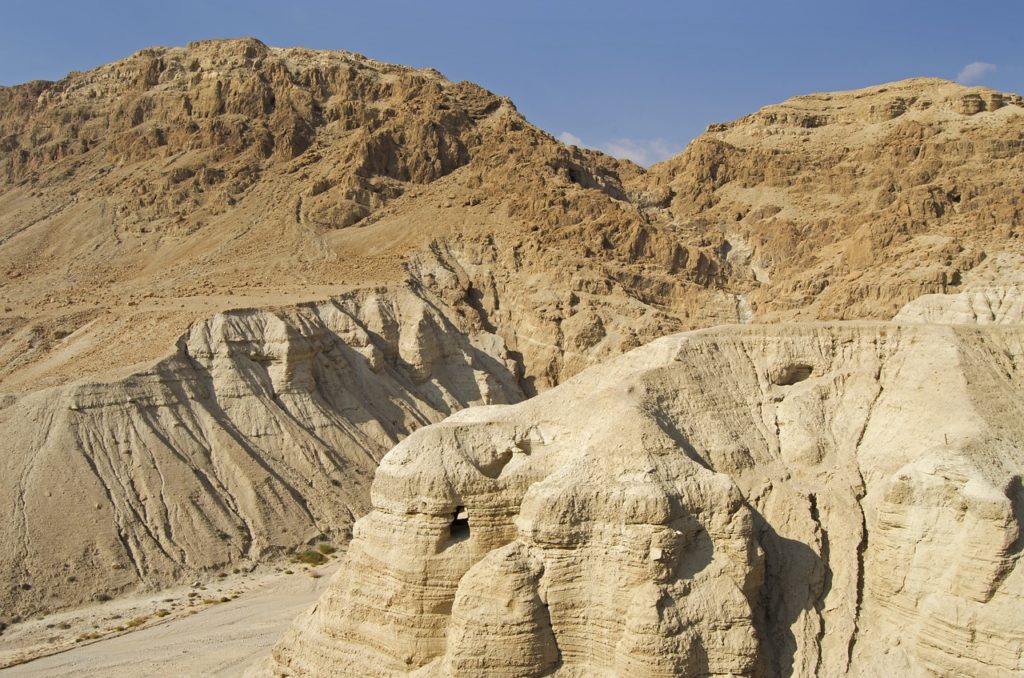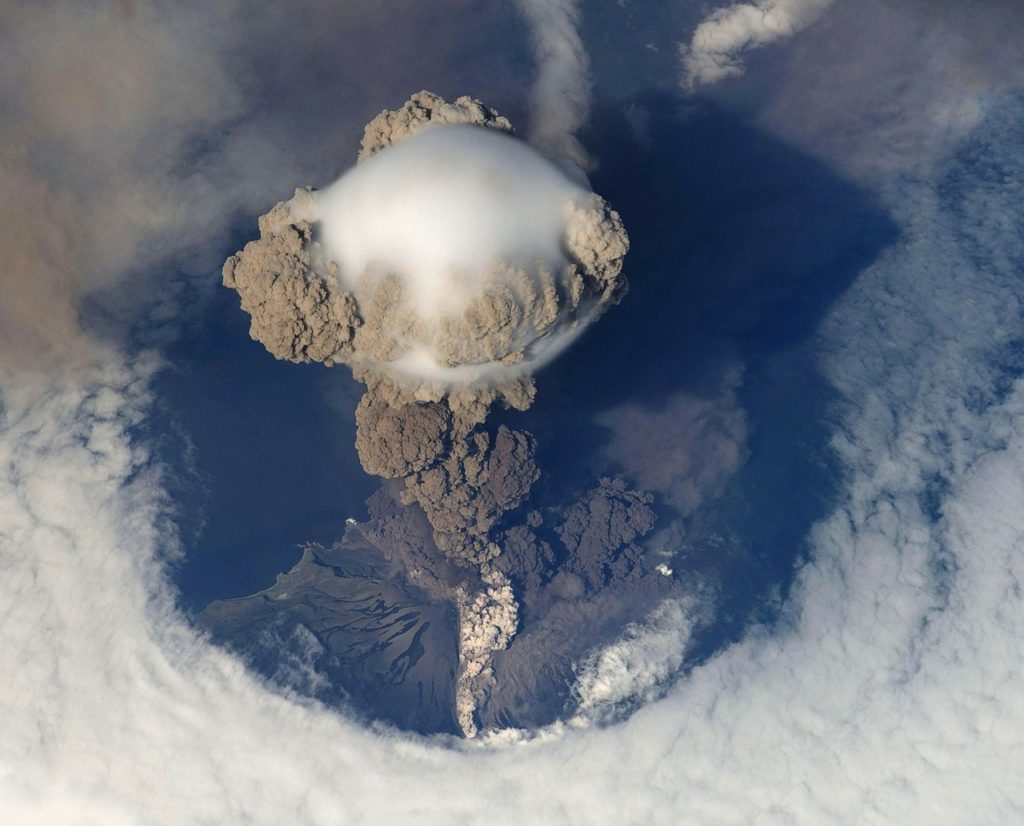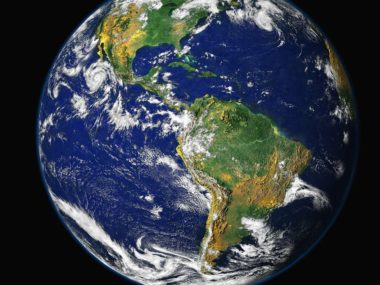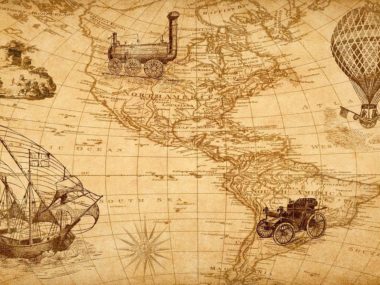“‘I am the Alpha and the Omega, the Beginning and the End’, says the Lord, Who is and Who was and Who is to come, the Almighty.”
(Rev. 1:8, NKJV)
Because He desires to be known, God reveals Himself to every person who has ever lived—or will live. As indicated in Rom. 1:18-20, and in examples throughout this volume, one way He does this is through the creation that each person observes during his or her lifetime. God maintains the creation (Neh. 9:6, Psa. 36:6; Col. 1:17; Heb. 1:3) so that, among other things, it will at any given time in earth history provide physical illustration of His nature.
The following article is a from Devotional Biology: Learning to Worship the Creator of Organisms, Chapter 15.1, pgs. 310-314. The views expressed reflect those of the author, and not necessarily those of New Creation.

But God also reveals Himself through history. He orchestrates the flow of events so as to bring glory to Himself and fulfill His purposes. The history of organisms is part of that plan, so we would expect an examination of the flow of life to also teach us about the One Who makes it all possible.
The overall plan for the history of organisms is closely tied to the history of the rulers God placed over them—the relationship between God and man. As can be seen over and over again in the history of Israel and Judah, the obedience of a king results in blessing on that nation’s people, and the disobedience of a king results in judgment on the people of that nation. Likewise, human obedience results in blessings on organisms placed in human charge, and human disobedience results in judgment on those organisms.
In creation, when man was blessed, animals were also blessed (Gen. 1:22, 28). Adam’s disobedience brought a curse on all mankind and a curse on all organisms (Gen. 3:14-19; Rom. 8:21-22). When Cain is cursed, the organisms he encountered were cursed as well (Gen. 4:12). When all but a remnant of humanity was destroyed in the Flood, the same Flood destroyed all but a remnant of organisms (Gen. 7:21-23).
At the end of the Flood, God covenanted with both man and animals never to destroy the earth again in a Flood (Gen. 9:9-16). Organisms will even be released from the curse when the curse is lifted from man (Rom. 8:18-23). The glorious creation/fall/redemption story of God’s dealings with man is also the same creation/fall/redemption story of biology. Consequently, as we learn about the history of organisms, we cannot help but learn not only about God, but also about God’s relationship to man.
The History of Organisms
Biblical Time
If we only had the New Testament and our experience since its authorship, we might think that time on earth did not matter much to God. We are not given the time between the birth of Jesus and His public ministry. We are not given a clear timeline on the birth of the Church, the life of the apostles, or the writing of the New Testament books. And we certainly would not anticipate nearly two thousand years of time that have elapsed between the first and second coming of Christ. We are even reminded on New Testament pages of that well-known phrase that “one day is with the Lord as a thousand years, and a thousand years as one day” (II Pet. 3:8).
Biblical Chronology

The Old Testament, in contrast, gives a wholly different impression of time. Genesis opens with a notation about time (‘in the beginning’) and immediately describes ‘days’ of creation. The sun, moon, and stars are even created for the purpose of marking out time (Gen. 1:14). In Chapters 5 and 11, Genesis continues with genealogies unique in the Ancient Near Eastern world—and even in the rest of the Bible—including the age of the fathers at the birth of their sons.
The only known purpose of such information is the construction of precise chronologies. There are precise time statements, such as ‘In the six hundredth year of Noah’s life, in the second month, the seventeenth day of the month’ (Gen. 7:11) and ‘in the six hundred and first year, in the first month, the first day of the month’ (Gen. 8:13). And there are summary statements about time, such as ‘at the end of four hundred and thirty years’ (Exo. 12:41) and ‘in the four hundred and eightieth year’ (I Kings 6:1).
Not only are there many statements about time, but it is fairly easy to string them together to develop a fairly precise chronology from the beginning of the creation to the time of Christ. According to this chronology, the creation occurred approximately 4000 B.C., the Flood occurred about 1656 years later, Abraham lived about 2000 B.C., and Solomon lived about 1000 B.C.
Biblical Chronology Accepted
Scripture makes claims about time. It tells us how much time elapsed in the Creation Week, how long each of the patriarchs lived, how old the patriarchs were when their sons were born, and so on. In contrast, the physical world—including the biological world—makes no statement at all about its age. If we wish to infer the history of the physical world using only evidence from the physical world, then the actual physical evidence we have is what we see in the present. What happened in the past and when it happened must be inferred. To do this, we must first infer what course history actually took, then we must infer how fast that history elapsed. If we are wrong about what actually happened, or if we are wrong about how fast it happened, we will likely arrive at incorrect conclusions about that history.

Inferring history by using the physical world alone is similar to a prosecuting attorney constructing a case against a defendant from circumstantial evidence. From the physical evidence observed in the present (in the courtroom) the prosecutor infers what happened in the past. Although this is a perfectly respectable way of determining history, such an account of history is never considered as reliable as the testimony of a good eyewitness to the event—even if the two involve radically different accounts of what happened. In the case of the history of the physical world, it is perfectly respectable to infer a history based upon data from the physical world alone, but it can never be as reliable as the testimony of a reliable eyewitness to the history of the world. And Scripture gives us that eyewitness account. God was not only present for the history of the world—and at one point the only one present—but He is also the perfect eyewitness. He saw everything that happened, His perspective was perfect, His understanding was perfect, His ability to communicate with us is perfect, and He cannot lie.
If God saw fit to give an account of the history of the world it should have priority over any inference of history made by humans, no matter how reasonable that inference. It turns out that God did see fit to give an account of the history of the world—at least from the beginning of the world to the time of Christ. The first part of that history is given in Genesis and it is presented to us in the literary genre of historical narrative—the very genre that would be expected from an eyewitness account.
Half of the biblical chronology—the two millennia or so from the time of Abraham to the time of Christ—is not controversial. Most everyone agrees on the timing of the events on this part of the chronology, including Abraham living about 2000 B.C. The earlier portion of the chronology however—the two millennia or so from the beginning of the creation to the birth of Abraham—relates a radically different history of the creation than is inferred from using the physical creation alone. However, it is the precision and clarity of this earlier chronology, combined with the fact that it is an inerrant eyewitness account of a perfect eyewitness, that leads us in this text to follow the biblical chronology rather than the history deduced from the physical world alone.
Earth Altering Events

Scripture not only provides a reliable eyewitness account of the origin of things, it also suggests a reason why history based upon physical world data alone would lead to radically different scenarios of earth history. In II Peter 3:3-4 we are told that there will be people in the ‘last days’ who will challenge God’s promise of returning, using the argument that ‘all things continue as they always have from the beginning of the creation’. These people have apparently decided that the way things are happening in the present world is the way things have always happened, and the way they will continue to happen. From this they incorrectly deduce that Christ’s return is impossible.
The passage continues (verses 5-7) by listing three events in the overall history of the world that these people are ignoring—the creation, the Flood, and the judgment to come. The passage implies that these events involve processes that are not occurring in the present. Scripture confirms that this is true for the creation event, for after finishing the creation, God ended His creating (Gen. 2:1-3), and this rest from creation continues to this day (e.g. Heb. 4). During the Creation Week events occurred that are not occurring in the present, including acts of special creation (the direct action of God to bring something into being). If a person assumes that things came into being by means of processes operating in the present, they will deduce an incorrect history.
Scripture also suggests that the same is true of the Flood account. Following the Flood, God promised that He would never again curse the ground for man’s sake (Gen. 8:21), never again disrupt the day/night and seasonal cycles (Gen. 8:22), and never again bring a global flood on the planet (Gen. 8:21; 9:9-17). As in the case of the Creation Week, during the Great Flood, processes occurred that are not occurring in the present. If a person assumes that modern processes were the only ones operating in the past, they will deduce an incorrect history. When a single command can immediately cause the earth to appear (Psa. 33:6-9), or a storm to still (Mark 4:39), a child to heal (Mat. 8:13), or a body to come to life (John 11:43-44), it is clear that God is not restricted to the usual processes of the present world to accomplish His tasks.
Not only is He capable of utilizing unusual process, but He has actually employed such processes in the past. If any such process impacts the entire earth or most of it, it can throw off historical inferences. Scripture suggests that such earth altering events will occur in the judgment to come and occurred in the past at the times of the Creation, the Fall, and the Flood. If only data from the physical world is used to infer history before the time of Abraham, that history is likely to be very wrong, and to be more and more wrong the farther back that history is inferred. This explains why the biblical chronology before the time of Abraham differs so radically from the history of life inferred from the data of the physical world alone.
Radiometric Dating
One of the most significant examples of this principle is the case of radiometric dating. Using radiometric dating, a chronology of earth history has been developed that corresponds to biblical history back to about 1000 B.C., but diverges from it more and more the farther back in time we go. By the early days of Abraham, the two are off by centuries; by the end of the Flood, the radiometric dates are thousands of times greater than biblical dates; by the time of creation the radiometric dates are millions of times greater.

The only data used in radiometric dating is data from the physical world—namely the number of extremely rare radioactive isotopes in the world. Isotopes are atoms with the same number of protons but a different number of neutrons. For example, Carbon 12 and Carbon 14 are isotopes of the element Carbon. Carbon 12 has 6 protons and 6 neutrons and Carbon 14 has 6 protons and 8 neutrons. Carbon 14 is a radioactive isotope of Carbon 12 because it is unstable and breaks down (decays) over time at a specific rate that can be measured. Radiometric dates are calculated assuming radiometric decay rates have operated in the past in the same way as they operate now. However, there is evidence that radiometric decay rates have been different in the past. Different dating methods applied to the same object generate different dates in a consistent manner.
It is most likely that earth altering events in history, such as at the Creation, the Fall, and the Flood, changed some of the rates that researchers assume have never changed. Although the dates computed from any one radiometric dating method probably put the events in the correct order, we will use the thousands of years of biblical chronology rather than the millions and billions of years of radiometric chronology.












Thank you, Dr. Wise!